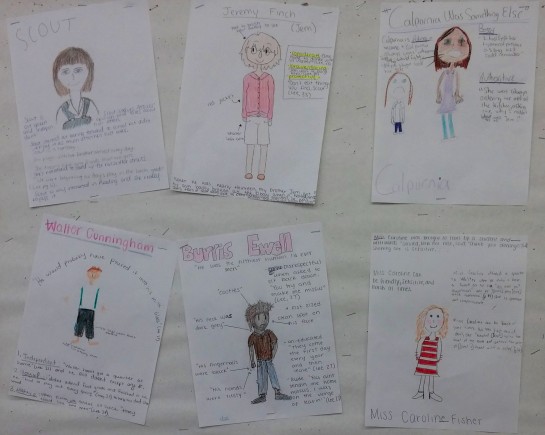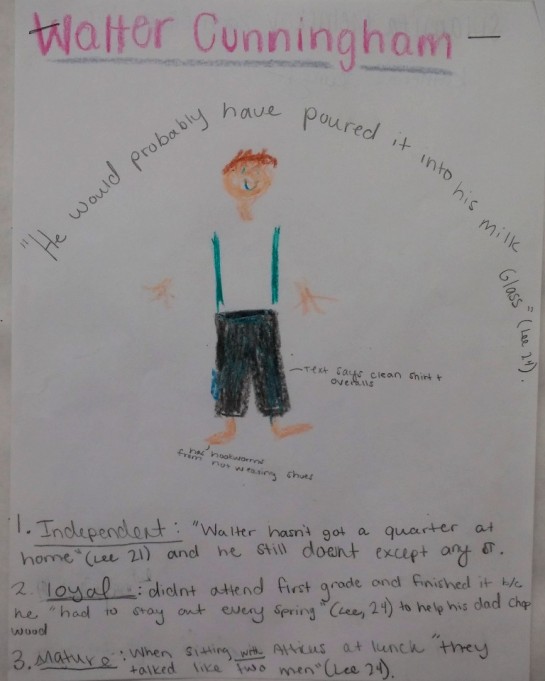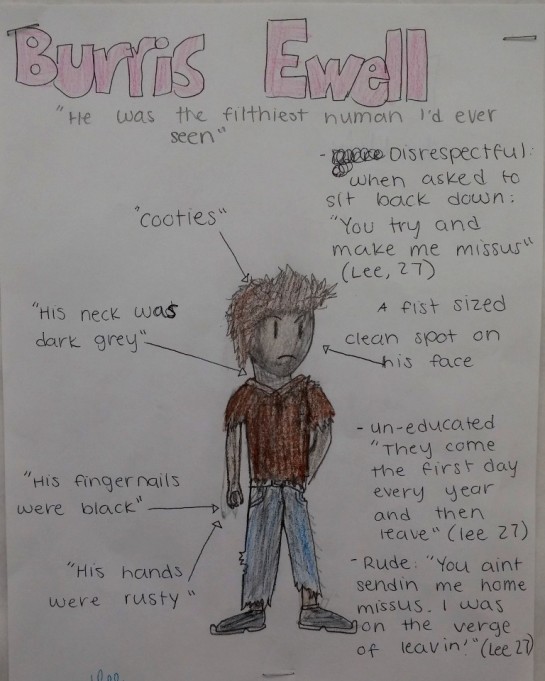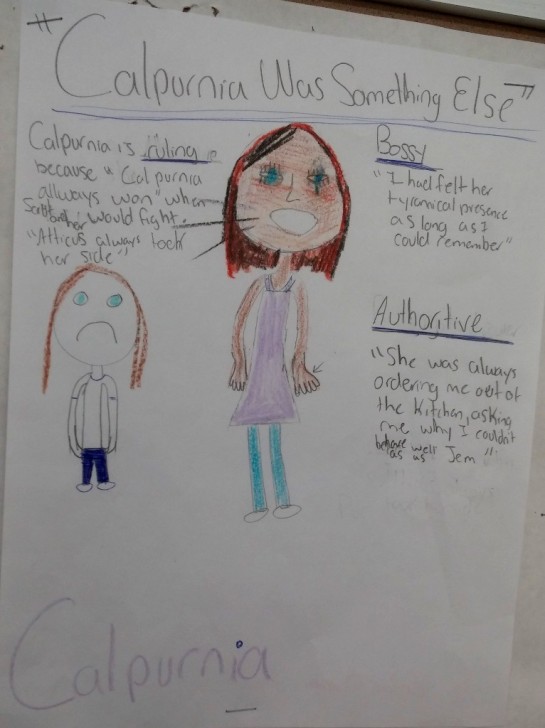So far, whenever I have approached students about forming and making a claim about text, we have used the Odell Education Forming Evidence-Based Claims forms as our graphic organizer. These have served us well, particularly the IEP and 504 students, in helping students to organize their thoughts and evidence as they prepare their writing.
I decided to use the same information but with a different graphic organizer for characterizing those we meet in Harper Lee’s To Kill a Mockingbird. For this exercise, we used characterization posters.
First, I specifically chose 4 children and 2 female adults who had an influence upon those children as we work through Part I of the novel. Since Part I focuses on the children and their interaction with their environment (Maycomb County, Alabama), I wanted to be sure to focus the students’ characterization on the children of the adults who will later be heavily involved with the events of Part II (the trial of Tom Robinson). We will later work with cross-referencing the adults of Part II to the behaviors of their children in Part I. I also decided that since Part II heavily focused on how the adult males were an influence upon their offspring, I wanted to balance the gender focus with Calpurnia and Miss Caroline in part I.
We have six groups in class, so the breakdown is as follows:
The children: Jeremy Finch (Jem), Jean Louise Finch (Scout), Walter Cunningham, Jr., and Burris Ewell
The women: Calpurnia and Miss Caroline
Each group was to create a Characterization poster that included all of the following:
– a drawing of the character based on descriptions from the text (with arrows pointing to specifics);
– three strong character traits, using textual evidence as support;
– an overarching caption for the character, as if the drawing/caption were going to be on a page in a new rendition of the novel.
When they finished their posters, I called on each group to share their characterizations, making sure that they used strong textual evidence and appropriately correlating diction in their word choices for character traits (no one was allowed to be considered “nice” or “caring”). You will see that there are some erasures on the posters as students made changes based on the open discussion.
 These are those that were selected for the bulletin board
These are those that were selected for the bulletin board
Not all the posters are “perfect” in that they include EVERYTHING that was asked for (particularly missing are some captions and the arrows pointing to specific details about how a character looks), but these had the strongest claims about the characters:
Instead of having the students write characterization paragraphs (although they all DID have three strong details along with what they thought of each detail– the traits), I had each one talk about their character. In this way, I could prod them to give me more information or to go deeper into explaining a particular trait.
As each group presented and was grilled, those sitting were to take specific notes so that each student ended up with strong characterization notes for Part I of the novel.
*Notice that I specifically avoided Atticus in Part I. He came up in the discussion of EVERY CHARACTER as part of INDIRECT characterization. I was trying to get them to see the difference between direct and indirect characterization. We will make an Atticus poster when we repeat this activity in Part II of the novel, and we shift our focus to the adults, particularly the male father-figures.





